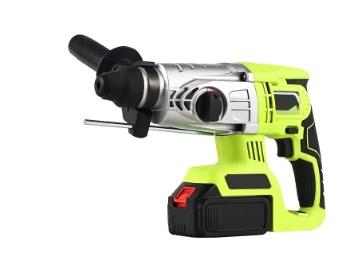The Art of Battery Care for Lithium Electric Tools: Extending Usage Time and Life

Lithium electric tools have revolutionized the way we approach manual labor, offering a blend of power, convenience, and portability that traditional power tools can't match. However, to fully harness their potential and extend their battery life, it's crucial to understand and implement proper maintenance practices. This article delves into the strategies and tips for maintaining lithium electric tools to ensure they serve you well for an extended period.
Lithium electric tools are powered by lithium-ion batteries, which are known for their high energy density, light weight, and lack of memory effect. These batteries have a limited number of charge cycles, which means that over time, their capacity to hold a charge will diminish. To prolong the life of your lithium electric tools, it's essential to understand how these batteries work and the factors that can affect their performance.
One of the most critical aspects of maintaining lithium electric tools is how you charge them. Avoid letting the battery drain completely before recharging, as deep discharges can shorten the battery's lifespan. Instead, aim to charge the battery when it reaches around 20-30%. Additionally, avoid overcharging, as this can generate heat and stress the battery, leading to a reduction in overall capacity.
When not in use, the storage conditions of lithium electric tools can significantly impact their battery life. Store the tools in a cool, dry place, away from direct sunlight and extreme temperatures. It's also recommended to store the batteries with a partial charge (around 40-60%) to prevent the battery from entering a deep discharge state, which can be detrimental to its health.
Lithium-ion batteries can suffer from a slow discharge even when not in use. Regular use helps to keep the battery active and can prevent this slow discharge from depleting the battery too much. If you don't plan to use your lithium electric tools for an extended period, it's a good idea to use them periodically to top up the charge.
Overheating is a common issue with lithium electric tools, especially during heavy use or in hot environments. Overheating can degrade the battery's performance and lifespan. To prevent this, take breaks during extended use, allow the tool to cool down, and ensure that any vents or cooling systems on the tool are not blocked.
The quality of lithium electric tools and their batteries can vary significantly. Investing in high-quality tools from reputable manufacturers can provide better battery performance and longevity. Cheaper, lower-quality batteries may have a shorter lifespan and are more prone to failure.
Handle your lithium electric tools with care to avoid physical damage that could affect the battery or the tool's performance. Keep the battery terminals clean and free from corrosion, and ensure that the battery is securely connected to the tool. Regularly inspect the battery for any signs of damage or swelling, which could indicate a potential safety hazard.
When it's time to replace the battery, choose a replacement that is compatible with your lithium electric tools. Using incompatible batteries can lead to poor performance or even damage to the tool. Always follow the manufacturer's guidelines for battery replacement to ensure a safe and effective process.
By following these best practices for the maintenance of lithium electric tools, you can significantly extend the battery life and overall performance of your tools. Remember that a little care and attention can go a long way in preserving the efficiency and longevity of your lithium electric tools, ensuring that they remain reliable partners in your work and projects.
- Art
- Causes
- Crafts
- Dance
- Drinks
- Film
- Fitness
- Food
- Giochi
- Gardening
- Health
- Home
- Literature
- Music
- Networking
- Altre informazioni
- Party
- Religion
- Shopping
- Sports
- Theater
- Wellness


